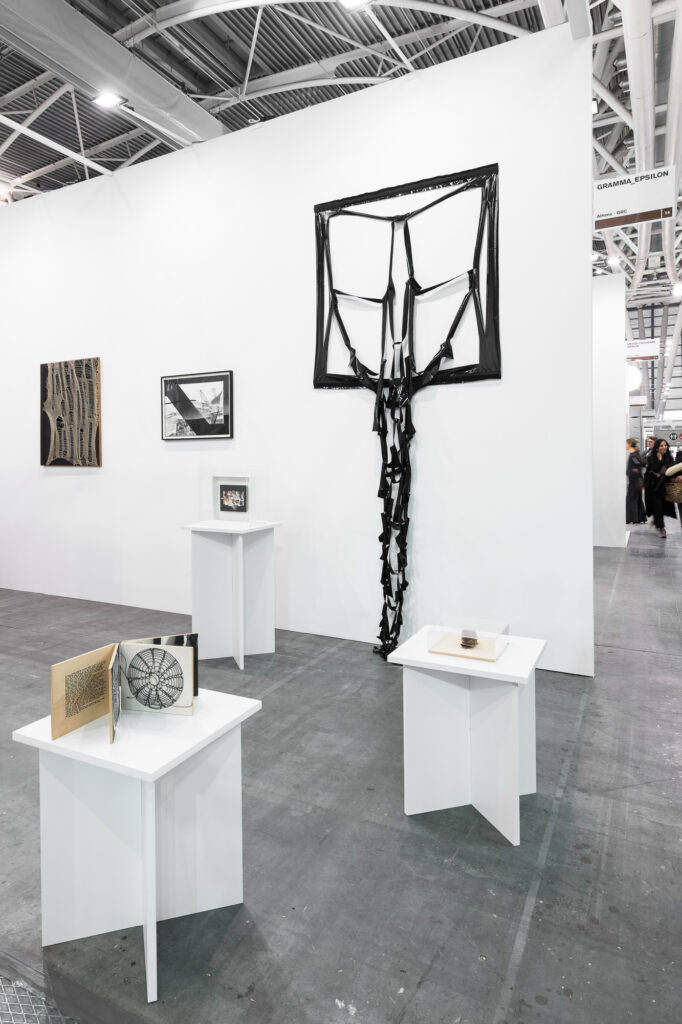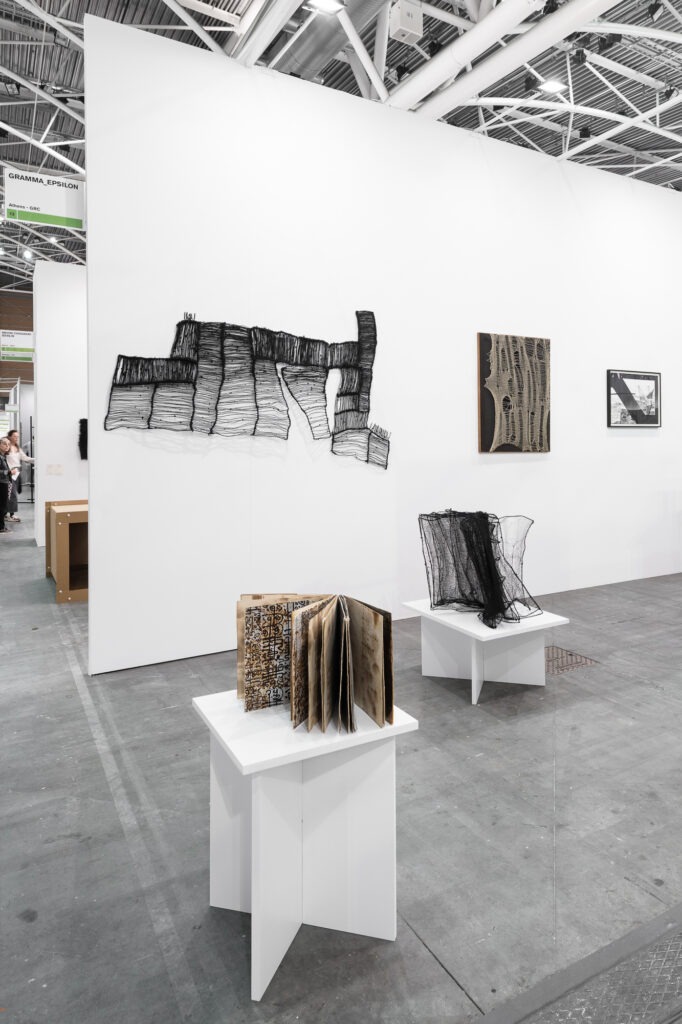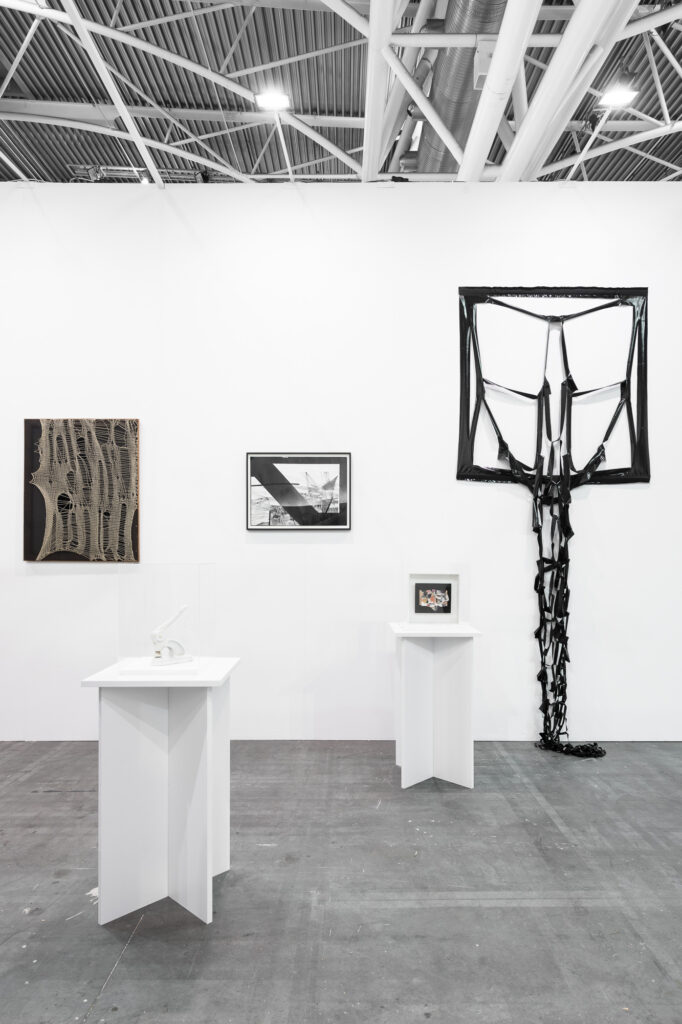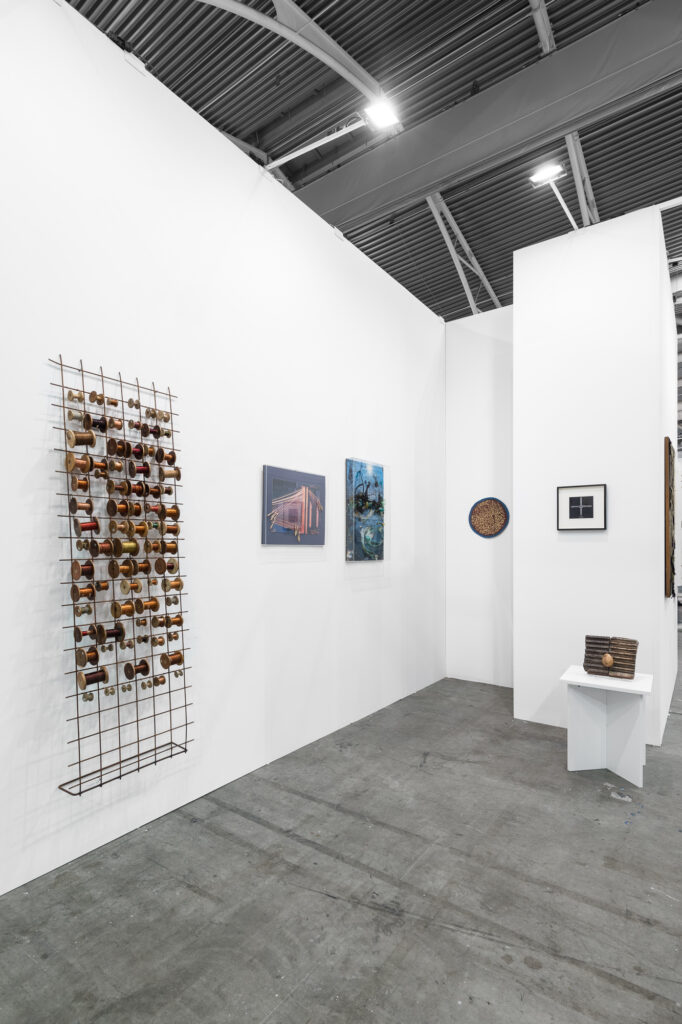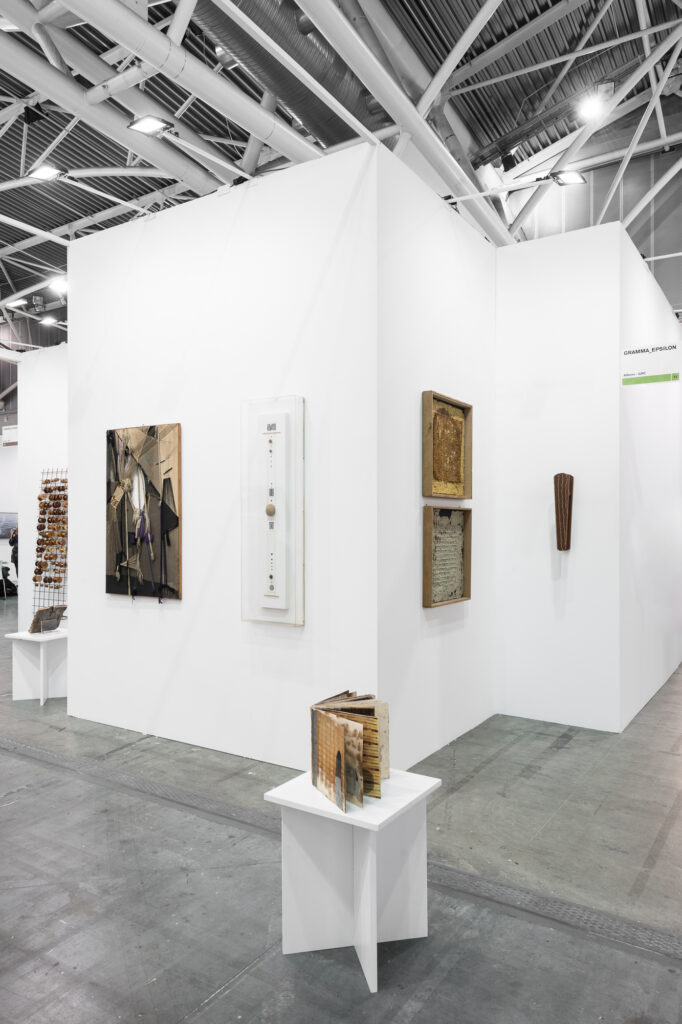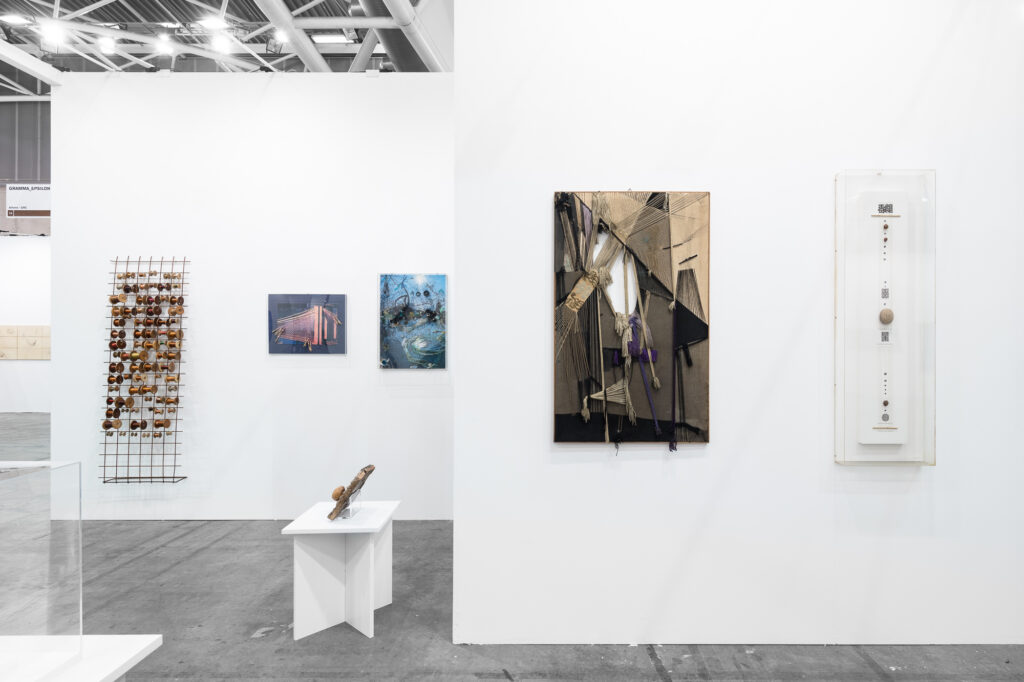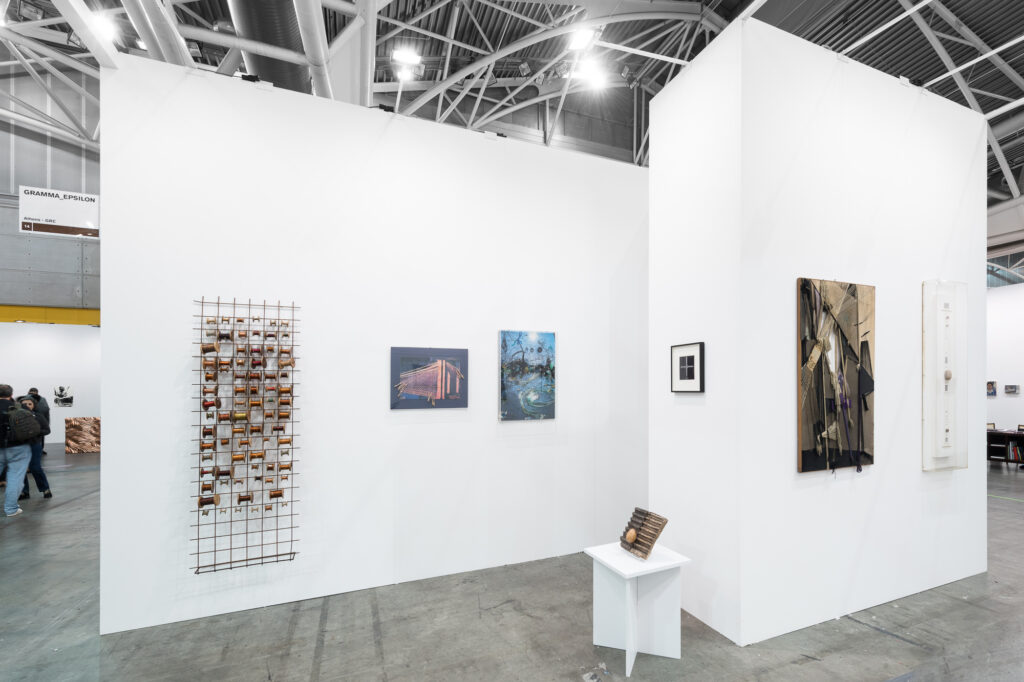Mirella Bentivoglio, Francesca Cataldi, Anna Esposito, Elisabetta Gut, Maria Lai, Gisella Meo, Greta Schödl, Franca Sonnino.
Artissima 2024
The Different Revolution
During the general climate of protest in the 1970s, women in Europe fought to reclaim their role in society. Since the feminist revolution touched upon many different areas of culture, it naturally influenced the consciousness of the creative world as well. Female art collectives soon formed, and came together to share their lived experiences and to support each other. Many women artists chose to hit the streets and took part at the forefront of the demonstrations, while others carried out their revolution in a different way, seemingly less obvious, yet equally as powerful.
Indeed, in the 1970s and 1980s artist, poet and curator Mirella Bentivoglio supported the struggle for female emancipation by curating annual exhibitions for female artists. Gramma_ Epsilon Gallery continues her legacy by introducing today the works of 8 female artists, including Bentivoglio herself, who have claimed their right to be artists by using as working tools the items that were close to hand and most compatible with their creative practice.
Maria Lai uses the thread and the loom not only as a revival of ancient Sardinian traditions and symbolism of the feminine, but also as a possibility of communion for the entire community. A vision that still inspires astonishment today, especially when set in the context of the period. Greta Schödl, in her decade-long work as a “words weaver,” often utilizes elements closely connected to the domestic female condition such as dishcloths, bedsheets, and an ironing board’s side, giving them a new life, akin to a form of redemption and emancipation from the role they are inherently relegated to. Franca Sonnino uses cotton thread, an element strongly linked to the female domestic universe, twisting it on an iron wire to create architectural forms, books, and three-dimensional objects; Anna Esposito brings together waste materials to create suggestive assemblages that denounce environmental degradation and the transgressions of the consumerist society; Francesca Cataldi uses cement, iron, and tar which she melts with a household iron; and Gisella Meo invites school pupils to create works of Participatory Art, human looms that teach the importance of solidarity. Elisabetta Gut, since the early 1970s, has been reinventing her own everyday universe where elements taken from the natural world, such as seeds and leaves, are combined with fragments of ancient musical writings or poems by using the main instrument of the female universe: thread. Mirella Bentivoglio herself works on the recovery of the archetypes deposited in the collective memory, emphasizing the relationship between ‘matter and logos’. Her works, of linguistic origin, provide a powerful starting point for reflection, still valid today.
Their revolution was powerful, intellectual and, at times, silent. They used art as a link between the inner vision, the dream and its expression. A powerful Trojan horse able to break down all kinds of barriers and allow all women to fulfill their dreams and live their daily lives without having to give up the role that the society of the time imposed on them.
